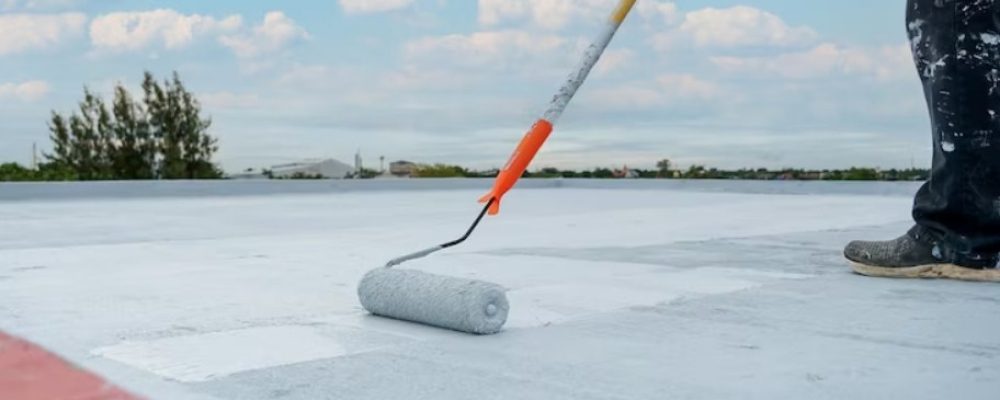By waterproofing your roof, you can prevent water leaks, which is one of the most common problems in many homes, especially if you live in an area with a humid climate or heavy rainfall. If water leaks are not properly addressed, they can cause structural damage to your home, as well as moisture and mold problems, which can cause damage to your belongings.
Therefore, it is important to waterproof your roof to protect your home from water leaks. In this article, we present the best methods for waterproofing your roof, so you can forget about leaks forever!
Waterproofing with Asphalt Membranes
Waterproofing with asphalt membranes is a very common and effective method for protecting roofs from water leaks. Asphalt membranes are composed of layers of asphalt and reinforcing materials that are joined together by heat or adhesive.
To apply the asphalt membrane, the roof surface is prepared, a base layer of asphalt is applied, and then the asphalt membrane is applied in several layers. You can waterproof your flat or low-slope roof with asphalt membranes.
The installation of asphalt membranes requires specialized skills and tools, so it is recommended to hire a professional to do the job.
Waterproofing with Waterproof Paint
Waterproofing with waterproof paint is an easy-to-apply option for protecting roofs from water leaks. Waterproof paint contains additives that make it resistant to water and can be applied to different surfaces, such as concrete, tiles, metal, or wood.
Before applying waterproof paint, it is important to clean and prepare the roof surface properly. In some cases, it may also be necessary to apply a primer to ensure good paint adhesion.
Additionally, it is applied in several layers, following the manufacturer’s instructions. It is important to make sure that each layer is completely dry before applying the next one. Waterproofing with waterproof paint is easy to apply and does not require specialized skills or tools.
Waterproofing your roof with rubber membranes.
By waterproofing your roof with rubber membranes, you are effectively protecting your home from water leaks. These membranes are made of synthetic rubber and are highly resistant to weather and UV rays.
To apply the rubber membrane, the roof surface is prepared, a base layer of adhesive is applied, and the rubber membrane is glued in several layers. The number of layers will depend on the degree of waterproofing required.
Additionally, the rubber membrane is durable and flexible, which allows it to adapt to different shapes and sizes of roofs. It is also resistant to punctures and tears. The advantage of waterproofing with rubber membranes is that it requires little maintenance.
Waterproofing with Polyurethane
It is a highly effective type of waterproofing that allows for the protection of roofs from water leaks and leaks. Polyurethane is a plastic material that is applied in liquid form and expands to form a waterproof layer that adheres to the roof surface.
The polyurethane layer forms a highly weather and UV resistant waterproof barrier. It is suitable for flat or low-slope roofs and can be applied to different types of surfaces, such as concrete, metal, or wood.
The advantage of waterproofing your roof with polyurethane is that it is durable and resistant to abrasion and tearing. Additionally, it is flexible and adapts to different shapes and sizes of roofs. However, waterproofing with polyurethane requires specialized skills and tools.
Waterproofing Your Roof with PVC Sheets
PVC sheets are plastic sheets that are joined together by heat or adhesive to form a layer that allows you to waterproof your roof.
To apply the PVC sheets, the roof surface is cleaned and prepared, and a base layer of adhesive is applied. Then, the PVC sheets are placed in several layers, overlapping the joints to prevent water leaks.
Additionally, the waterproofing can last up to 30 years with proper maintenance. The advantage of waterproofing with PVC sheets is that they are resistant and durable, which means they require little maintenance. They are easy to install and can be cut to size to fit any shape or size of roof.
Regular maintenance after waterproofing your roof
It is important to perform regular maintenance on the roof to ensure that the waterproofing remains effective and protects your home from water leaks. Some tips for roof maintenance are as follows:
- Inspection: Conduct regular inspections of the roof to detect any damage or wear on the waterproofing. Pay attention to areas where water accumulates or where there are signs of leakage.
- Cleaning: Regularly clean leaves, branches, and other debris that may accumulate on the roof. These can clog gutters and cause water to accumulate.
- Sealing: If you detect cracks or fissures in the waterproofing, seal these areas with an appropriate sealant to prevent water from leaking.
- Repair: It is important to repair any damage to the waterproofing as soon as possible. This will prevent it from worsening and causing water leaks in the home.
- Professional Maintenance: It is recommended tohire a professional to perform regular maintenance on the roof, especially if you have a specialized waterproofing system installed. A professional can detect any potential problems and make necessary repairs to ensure that your roof remains waterproof and protects your home from water leaks.
Conclusion
In conclusion, waterproofing your roof is an essential step in protecting your home from water leaks and moisture problems. You can choose from different methods, such as asphalt membranes, waterproof paint, rubber membranes, polyurethane, and PVC sheets, depending on your budget and needs. Regular maintenance is also important to ensure that your waterproofing remains effective and your roof remains in good condition. By following these methods and tips, you can keep your home safe and dry for years to come.





